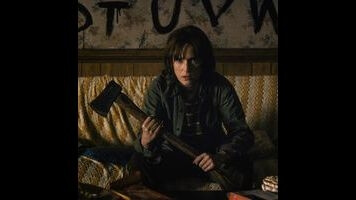Netflix’s sci-fi throwback Stranger Things is yesterday’s summer blockbuster today

Nostalgia is best served in small portions, so the relative secrecy around Netflix’s new series Stranger Things has worked to its advantage. The show’s in-production log line while it was still called Montauk—a young boy mysteriously disappears in 1982 in bucolic “real” America—suggested something closer to Mystic River than Close Encounters Of The Third Kind. But the trailer and key art evokes the latter film and other summer tentpoles of yesteryear, produced back when blockbusters were family-friendlier and there wasn’t a new supervillain trying to raze Manhattan every Friday.
Twin creators Matt and Ross Duffer wear their genre influences on their sleeves, and Stranger Things is a deliberate effort to replicate classic cinematic tales of young kids confronting ancient evils. Had the show been identified early on as a Spielberg homage with an unsettling synthesizer score, it would have been nearly impossible to reserve early judgment. The supernatural thriller has a slim margin for error even when it’s not stylized. Pulling off a faithful but not slavish tribute to Spielberg, John Carpenter, and Richard Donner is far more difficult, which J.J. Abrams learned the hard way with the lukewarm Super 8. Add in the format and length—eight one-hour episodes—and Stranger Things seems like a spaceship wreck waiting to happen.
In fact, Stranger Things is stylish, beguiling, and eminently bingeable, but it isn’t skeptic-proof. The Duffer brothers, who previously worked on Fox’s surprisingly compelling Wayward Pines, should know by now that open-ended supernatural mysteries are going to dissuade some viewers, particularly those who have felt duped by such stories in the recent past. But anyone willing to push through their resistance will find a borderline hypnotic show that could be to this summer what USA’s Mr. Robot was to last summer: a hyper-stylized niche series that feels essential even at its wobbliest.
Winona Ryder toplines the series as Joyce Byers, a mother spiraling out of control following the disappearance of her son Will (Noah Schnapp) from the eerily quiet Hopkins, Illinois. But Ryder isn’t the star. That title is shared by the middle schoolers trying to bring their friend back home, Will’s friends Mike (Finn Wolfhard), Dustin (Gaten Matarazzo), and Lucas (Caleb McLaughlin). Stranger Things follows the trio in their harrowing quest to rescue their friend, who struggles to communicate to them from the beyond. Their adventure intensifies after they cross paths with Eleven (Millie Bobby Brown), who between the buzzcut and the eponymous brand on her forearm, looks enough like the subject of a covert experiment that it hardly matters that she’s mute.








































